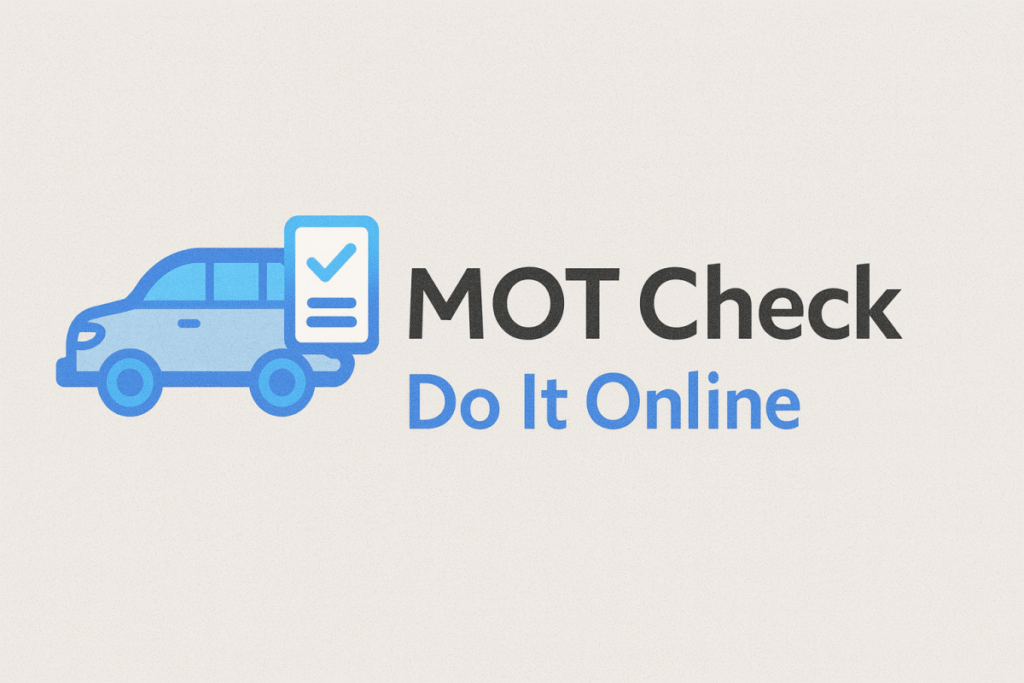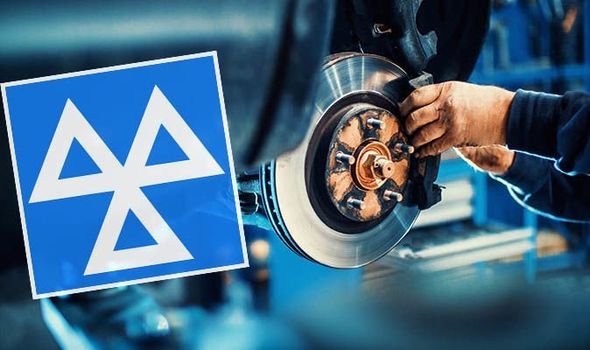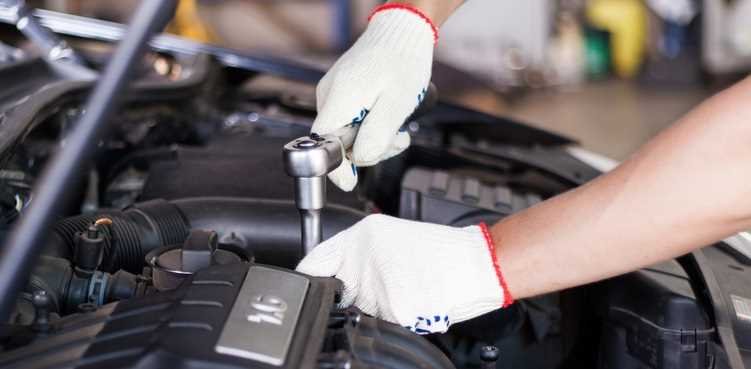Keeping your vehicle road legal isn’t just about driving carefully — it’s also about ensuring your car has a valid MOT certificate. Whether you’ve owned your car for years or just bought it, My MOT Check is the easiest way to find out your MOT history and due dates using your vehicle registration number.
With just a few clicks, you can check MOT expiry dates, advisory notes, mileage records, and past test results online — completely free of charge. This guide will show you exactly how to do it, why it matters, and how to keep your MOT certificate up to date without hassle.
What Is an MOT Test?
The MOT test is a mandatory vehicle inspection required annually for most cars over three years old in the UK. It ensures that your vehicle meets the legal safety and environmental standards set by Driver and Vehicle Standards Agency (DVSA).
Driving a car without a valid MOT is illegal. You can face fines of up to £1,000 and penalty points — and in some cases, your insurance may become invalid.
Checking your MOT status regularly with My MOT Check helps you avoid these problems by giving you real-time information about your car’s MOT validity.
Why “My MOT Check” Matters
Many drivers forget their MOT due date or only remember when it’s too late. With My MOT Check, you can:
-
✅ Verify whether your vehicle has a valid MOT certificate
-
🕒 Know your next MOT test due date
-
🧾 See your complete MOT history (pass/fail records)
-
🔧 Review advisory and failure notices
-
🚘 Confirm the mileage history of your car
This is especially useful when:
-
You’re buying or selling a car
-
You’ve moved to a new area and need MOT info
-
You want to book an MOT test in advance
By using My MOT Check, you stay informed and road legal at all times.
How to Check Your MOT History Online Using Your Registration Number
Checking your MOT history is straightforward and free. Follow this simple step-by-step guide:
Step 1: Visit the Official MOT Check Website
Go to the official government MOT history check page here:
👉 https://www.gov.uk/check-mot-history
This site is managed by DVSA, ensuring your information is accurate and up to date.
Step 2: Enter Your Vehicle Registration Number
Type your car’s registration number into the search box. Make sure you enter it exactly as it appears on your number plate (with no spaces or errors).
Step 3: Confirm Your Vehicle Details
Once you enter the registration number, the system will display your vehicle’s make, model, colour, and registration date. Double-check to make sure it matches your vehicle.
Step 4: View Your MOT History
You’ll see:
-
Previous MOT test results
-
Pass/fail status for each year
-
Advisory and failure notes
-
Recorded mileage at each test
-
Upcoming expiry date
This information can be accessed anytime and is completely free to use.
Benefits of Using “My MOT Check”
Checking your MOT history isn’t just about avoiding fines. It comes with several practical benefits:
-
Transparency: You get a full MOT record directly from DVSA.
-
Maintenance Planning: Advisories highlight issues that might cause problems later.
-
Buying Confidence: When purchasing a used car, MOT history reveals how well it’s been maintained.
-
Avoiding Fraud: Confirms mileage history to prevent odometer scams.
-
Timely Renewal: Helps you plan your next MOT test without last-minute panic.
This makes My MOT Check a valuable tool for every driver in the UK.
MOT History vs MOT Status — What’s the Difference?
It’s important to understand the difference between MOT history and MOT status:
-
MOT History: A record of all past MOT tests, including results, advisories, and mileage.
-
MOT Status: Shows whether your vehicle currently has a valid MOT certificate and the expiry date.
My MOT Check gives you both — making it easier to track the past and prepare for the future.
What Information You’ll See on an MOT History Report
When you check MOT history using your registration number, you’ll get a detailed report that includes:
-
✅ Vehicle details (make, model, colour, year)
-
📅 Date of each MOT test
-
✅ Pass or fail status
-
🧾 Reasons for any failures
-
🧰 Advisory notices
-
📊 Recorded mileage readings
-
🕒 MOT expiry date
This level of transparency helps ensure vehicle safety and accountability.
When to Use “My MOT Check”
You should make My MOT Check a regular habit, especially in these situations:
-
Before booking your MOT test
-
After buying a second-hand car
-
When selling your car
-
Before going on a long trip
-
To verify repairs were completed after advisories
The best time to check is at least a month before your MOT expires — giving you time to fix any issues.
What Happens If You Forget Your MOT Renewal?
If your MOT expires and you continue to drive:
-
🚫 You risk a fine of up to £1,000.
-
🚔 Your insurance may become invalid.
-
🛑 Your vehicle can be seized or impounded.
The only exception is if you’re driving to a pre-booked MOT appointment. But even then, the vehicle must be roadworthy.
By using My MOT Check regularly, you can avoid these risks entirely.
How to Book Your MOT After Checking MOT History
After reviewing your MOT history, the next logical step is booking your test. Here’s how to do it easily:
-
Choose a DVSA-Approved MOT Centre
Pick a centre near you that is officially recognized. -
Book Online for Convenience
Booking online saves time and allows you to choose your preferred date and time. -
Prepare Your Vehicle in Advance
Address any advisory issues found in your MOT history before your appointment. -
Get Tested and Certified
Once your vehicle passes, you’ll receive a new MOT certificate valid for 12 months.
👉 Book your MOT test online here
Tips to Avoid MOT Failures
Your MOT history check can highlight recurring issues. Fixing them early can help you pass your next MOT test on the first attempt.
Common failure points to address:
-
Lights and indicators not working properly
-
Worn-out tyres with low tread depth
-
Cracked windscreen or faulty wipers
-
Brake issues
-
Emissions problems
A quick pre-MOT check can prevent these minor problems from turning into MOT failures.
Checking MOT History When Buying a Used Car
When purchasing a second-hand vehicle, My MOT Check is essential. It can reveal:
-
Mileage discrepancies (odometer fraud)
-
Repeated advisory issues
-
Accidents or neglect
-
Missed MOT renewals
Simply enter the registration number of the car you’re considering, and you’ll get its full MOT history instantly. This helps you make an informed decision and negotiate the price better.
Outbound Links to Add
-
Check MOT History – Official DVSA page
-
Check MOT Status – Official government MOT status checker
-
MOT Inspection Manual – Full MOT inspection criteria
These will help with internal SEO linking and keep users engaged.
How Often Should You Check Your MOT History?
While MOT history doesn’t change daily, it’s wise to check it:
-
At least once a year (when MOT is due)
-
After buying or selling a car
-
If you suspect issues with previous test results
-
To track recurring advisories
Regular checks give you complete control over your car’s MOT timeline.
My MOT Check vs Garage Records
Some people rely only on garage records. While garages may keep data, My MOT Check offers official DVSA records accessible from anywhere.
Garage records may not always include the full history or be easy to access, but MOT history checks are always available online, 24/7, for free.
What to Do If MOT Information Is Incorrect
If the MOT history shown on the DVSA website is wrong (e.g., incorrect mileage or test results), you can:
-
Contact the MOT testing centre that carried out the test.
-
Reach out to DVSA customer services.
-
Provide proof, such as your MOT certificate or service records.
DVSA can investigate and correct the error if needed.
Why “My MOT Check” Should Be Part of Your Routine
Your MOT certificate is more than a piece of paper — it’s your legal right to drive safely on UK roads. By using My MOT Check, you can stay informed, prepared, and compliant at all times.
✅ Check your MOT history in seconds
✅ Avoid fines and penalties
✅ Track your car’s maintenance record
✅ Make smarter buying or selling decisions
Don’t wait until your MOT expires. Stay proactive and check your vehicle’s MOT status regularly.



